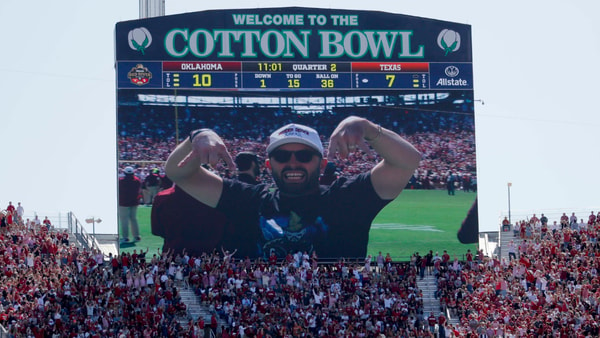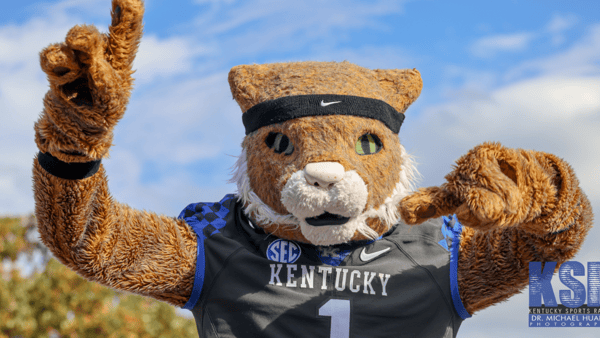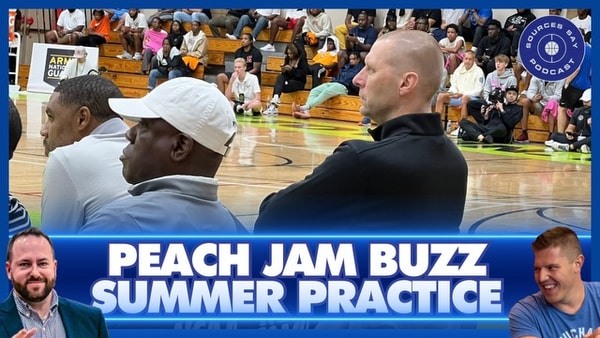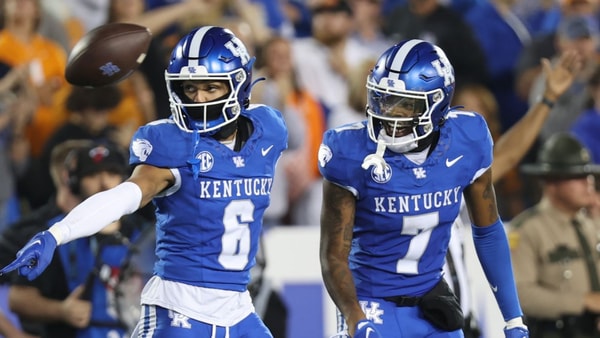Reliving Mountain Basketball Tradition: 1928 Excellence
This Spring I was lucky enough to enroll in an Appalachian Geography class at UK. Exploring the cultural past of our ancestors charged me to look further into the impact of basketball over the last 100+ years. Usually KSR posts are limited to facts found on the internet, but this summer I will be taking that one step further. With the help of William T. Young Library’s archives and the Mountains’ Finest Oscar Combs, I will re-tell some of the greatest stories from the past that are often left out of the equation for those that were not around to see it firsthand.
Before I begin this series with the unbelievable 1928 basketball season, it’s important to know how basketball’s roots took such a strong hold in East Kentucky. The hills of Appalachia fueled the nation beginning in the late 19th century, holding the richest coal deposits in North America deep underground. Capitalists swarmed the area, acquiring as much land as possible. In order to maintain and grow a work force, coal companies began manufacturing coal camp towns throughout the area. These sites were near the mines and financed entirely through the company. Miners rented from the company housing and bought all of their goods from the commissary store using company money called script.
The size of coal camps grew into large towns, with Lynch homing up to 10,000 people at one point in the 20s. The population boom spread into cities, with Harlan tripling in size from 1910-20. Finding an escape from the mines for a large population was important to keep spirits up. Some played musical instruments, others played basketball. “The best part about basketball was that it was the only sport that you could play by yourself,” recalls Perry County native Oscar Combs. Oscar grew up in a coal camp 8 miles outside of Hazard, learning to play basketball as a child on a goal attached to a barn. “It didn’t cost that much to buy a rim. Everyone had a rim hanging from their barn, and you’d see kids playing at all hours of the day.” This is also the place where chains became the standard net for outdoor basketball goals. A common feature of inner-city parks today, almost a century ago they were first used because they could withstand the harsh weather. “Nylon nets cost too much to be washed away with the first storm that hit.”
Nets may have washed away with storms, but basketball developed into a permanent community fixture in the 20s. With populous coal camps scattered throughout, schools were large enough to have gymnasiums for winter basketball. “There wasn’t anything to do during the winter except play basketball. Everyone looked forward to basketball games because they were the single biggest event in the community; the only thing that would compare was pie auction fundraisers held twice a year.” Players in the area were becoming more and more talented as the sport grew throughout the state. Eastern Kentucky boys took advantage of their surroundings. Carr Creek’s basketball court was on top of a mountain. If you missed a shot, it rolled 300 ft. down the mountainside into the creek. “Needless to say, they got very good at shooting and rebounding.” An inherent characteristic of Appalachians also played to their favor. Barry Bingham Jr. of the Courier-Journal told Oscar Combs in a 1964 interview, “People that apply [for a job] from the mountains automatically get a +5. NOBODY works harder than mountain people.” Work ethic in the right environment created a team of legend in 1928.
A little blip on the map without a post office, the one thing the small town of 140 had in 1928 was a high school. With only seven girls and eight boys, the boys spent all of their free time after school playing on the mountain-top dirt court until sundown. The results were 18 games without a timeout, substitute, or loss. As word began to spread of the elusive forward Shelby Stamper and the Adams Brothers, stories began to take on a life of their own. City newspapers declared them the ‘Barefoot Boys’, too poor to afford shoes or uniforms, but excellent basketball players. Oscar Combs was quick to debunk the uniform rumor, “but if I asked a group of 20 people who ‘were there’, 12 of em would say one thing, 6 would say something else, and the rest of em would have a different story all together.”
While differentiating myth from fact may be difficult, one fact remained undeniable: this team was great. The countless hours of experience playing together gave them the most ferocious defense anyone had ever seen in the mountains. They tore through the regular season and regionals, giving them the opportunity to ride their first train to Richmond, KY. After holding their first 3 opponents to 11 points combined, they faced powerhouse Paul Blazer High School from the Appalachian industrial city of Ashland.

Ellis Johnson’s impact at Kentucky is greater than an All-American career; he was on the “search committee” that hired Adolph Rupp.
The 28-0 Tomcats’ team was led by future UK All-American Ellis Johnson, creating a battle for the ages for 4,000 fans packed into Lexington’s Alumni Gymnasium. For those that couldn’t fit into Alumni Gym, Kentucky Theatre received telegraph updates throughout the game. The Creekers pushed Ashland to the limit, holding them to ZERO field goals in the first half, taking a 4-3 lead into halftime. The defensive struggle continued, with Ashland clinging to a 9-8 lead in the final minutes. Carr Creek’s Shelby Stamper hit a free throw with a second left in regulation to send the game into Overtime. Three overtimes later, the score remained tied at 9. The 3rd OT began with a long-range strike from Ashland’s Gene Strother, followed by a layup from Johnson giving the Tomcats a 13-9 lead. Carr Creek responded, cutting it to two, but Ellis Johnson’s dribbling stalled the game to give Ashland an undefeated State Championship.
The game made national headlines, giving the Barefoot Boys enough publicity to advance to the National Interscholastic Basketball Tournament in Chicago alongside Ashland. Even though Carr Creek could only manage a couple of wins, Ashland assured the nation that Kentucky was the best basketball state, taking home the National Championship Trophy. From Carr Creek to Chicago, the Barefoot Boys achieved something people in the area never thought was possible. 85 years have passed, but their legacy will live forever in the hollers of Knott County, Kentucky.
-@RoushKSR










Discuss This Article
Comments have moved.
Join the conversation and talk about this article and all things Kentucky Sports in the new KSR Message Board.
KSBoard